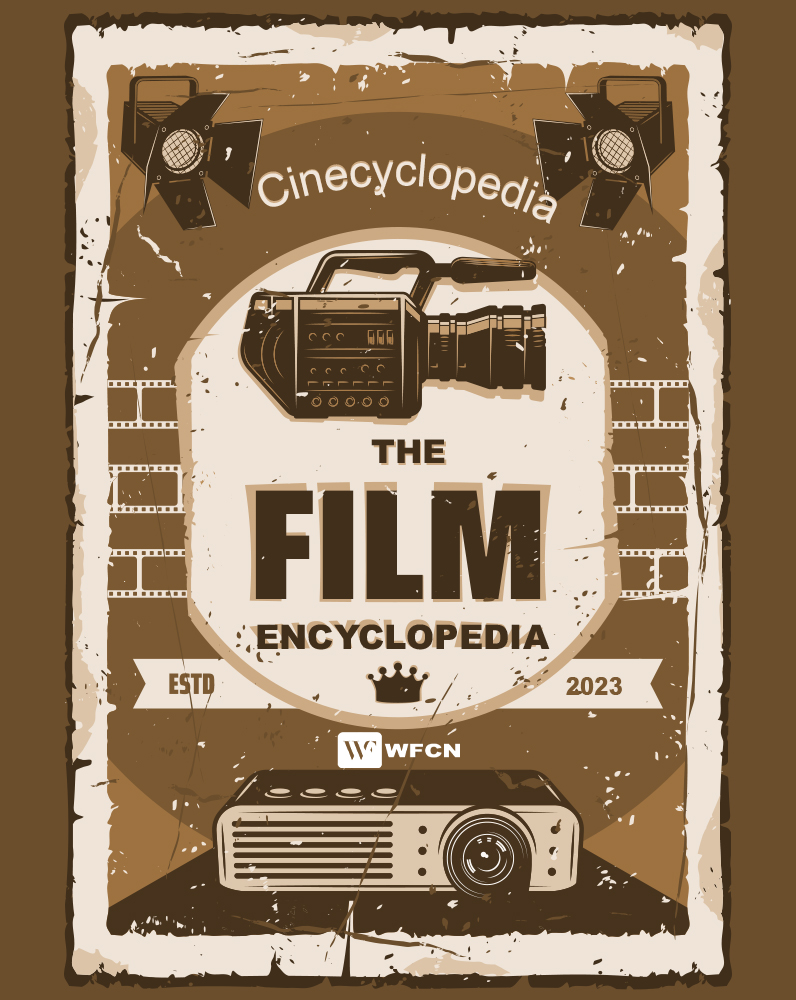Films of Australia
Created on : October 18, 2023 17:29 | Last updated on : January 17, 2024 13:43
Denotation
Australian Filmmakers have produced many films, a number of which have received international recognition. Many actors and filmmakers with international reputations started their careers in Australian films, and many of these have established lucrative careers in larger film-producing centres such as the United States.

Introduction
It had its beginnings with the 1906 film production of The Story of the Kelly Gang, arguably the world's first feature film. Since then, Australian Film Professionals have produced many Australian Films, a number of which have received international recognition for films. Many actors and filmmakers from Australia with international reputation started their careers in Australian films, and many of these have established lucrative career in larger film producing platform such as the United States.
Commercially successful Australian films include: Crocodile Dundee (1986) , George Miller's Mad Max: Fury Road (2015), Baz Luhrmann's Moulin Rouge!, and Chris Noonan's Babe. Award-winning film productions include Picnic at Hanging Rock (1979), Gallipoli, The Tracker, Shine and Ten Canoes.
History of Australia Films
The Australian film critic David Stratton characterized the history of the Australian film as one of "boom and bust": there have been deep troughs, during which few films were made for decades, and high peaks, during which a glut of films reached the Australian film industry.
Pioneer days – 1890s to 1910:
The first public screenings of films in Australia took place in October 1896, within a year of the world's first film screening in Paris by Lumière brothers. On 22 August 1896, the first commercial films projected to Australian audience were at Harry Rickards' Melbourne Opera House (later known as the Tivoli Theatre). The film by Australian film director Magician Carl Hertz was screened as part of a variety show act. Australian tours with similar projection machines followed. Australia's first cinema, the Salon Lumière at 237 Pitt Street, Sydney, was operating in October 1896, and showed the first Australian-produced short film on 27 October 1896.
The Athenaeum Hall in Collins Street, Melbourne, operated as a dance hall from the 1880s, and from time to time would provide alternative entertainment to patrons. In October 1896 it exhibited the first movie shown in Australia, within a year of the first public screening of a film in Paris on 28 December 1895 by the famous film directors - French Lumière Brothers. The Athenaeum would continue film screenings, such as Life in Our Navy, a 60,000-foot film of life on HMS Jupiter, shown on 26 January 1901 by G. H. Snazelle, who provided additional entertainment.
A landmark of newsreel photography was in 1897, when films of both the Caulfield Cup and Melbourne Cup were screened at the Melbourne Opera House on the evenings of the race. The events had been captured on film for W. C. Baxter and developed the same day by Australian photographer Robert William Harvie (died 5 October 1922)and inventor Ernest J. Thwaites (c. 1873 – 12 July 1933).
Some of the earliest film shot in Australia consisted of films of Aboriginal dancers in Central Australia, shot by anthropologists film directors Baldwin Spencer and F. J. Gillen between 1900 and 1903. They pioneered sound recording on wax cylinders and shot their films under very difficult conditions.
The earliest Australian-produced Narrative Feature Film in the world was The Story of the Kelly Gang (1906), shown at the Athenaeum. The film, written and directed by Australian Film Director Charles Tait, included several of his family members. The film was also exhibited in the United Kingdom in January 1908.
Melbourne also hosted one of the world's first film studios, the Limelight Department, operated by the Salvation Army in Australia between 1897 and 1910. The Limelight Department produced evangelical material for use by the Salvation Army, as well as carrying out private and government contracts. In its 19 years of operation the Limelight Department produced about 300 films of various lengths, making it the largest film-producer of its time. The major innovation of the Limelight Department came in 1899 when Australian Film Directors Herbert Booth and Joseph Perry began work on Soldiers of the Cross, described by some as the first feature-length film ever produced. Soldiers of the Cross fortified the Limelight Department as a major player in the early Australian film-industry. The Limelight Department also produced a film recording of the Federation of Australia.
2020–present:
An Australian film and TV industry was afflicted by COVID-19 pandemic, with at least 60 shoots being halted and about 20,000 people out of work. On Monday 23 March, all productions funded by Screen Australia were postponed. As of 15 April 2020, after some improvement in COVID-19 statistics in Australia, Screen Australia continues to fund work and process applications, intending to use all of its 2019/20 budget.
Sometimes after reopening movies and TV industries, two other several films including Escape from Pretoria (2020) and James Wan's reboot of video game franchise Mortal Kombat (2021), a feature film production in the state's history, who were delaying the films during the pandemic.
Australian Government support for the Film Industry
John Gorton, Prime Minister of Australia from 1968–1971, initiated several forms of Government support for Australian film and the Television Industry, establishing the Australian Council for the Arts, the Australian Film Development Corporation and the National Film and Television Training School. Prime Minister Gough Whitlam continued to support Australian film. The South Australian Film Corporation was established in 1972 to promote and produce films in Australia, while the Australian Film Commission was created in 1975 to fund and produce internationally competitive films.
The federal Australian government had supported the Australian Film Industry through the funding and development agencies of Film Finance Corporation Australia, the Australian Film Commission and Film Australia. In 2008 the three agencies were consolidated into Screen Australia.